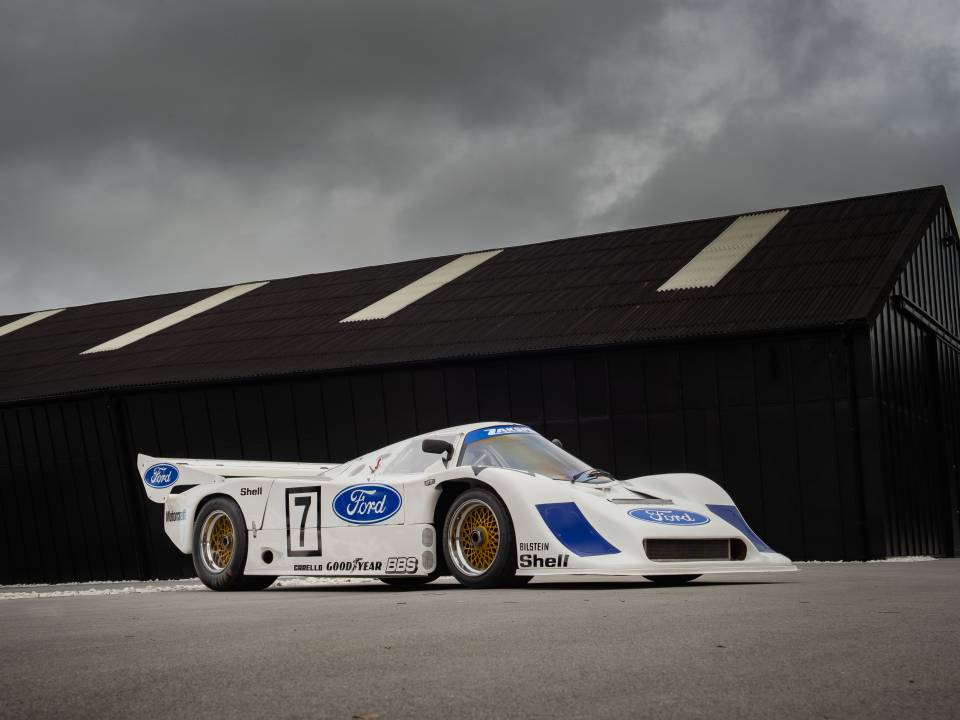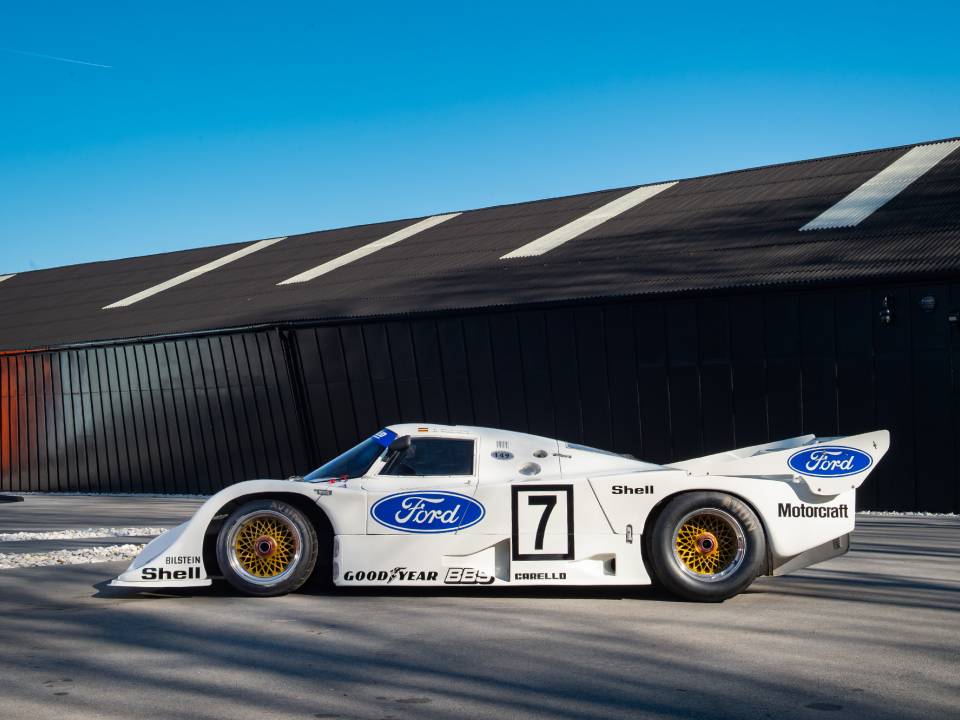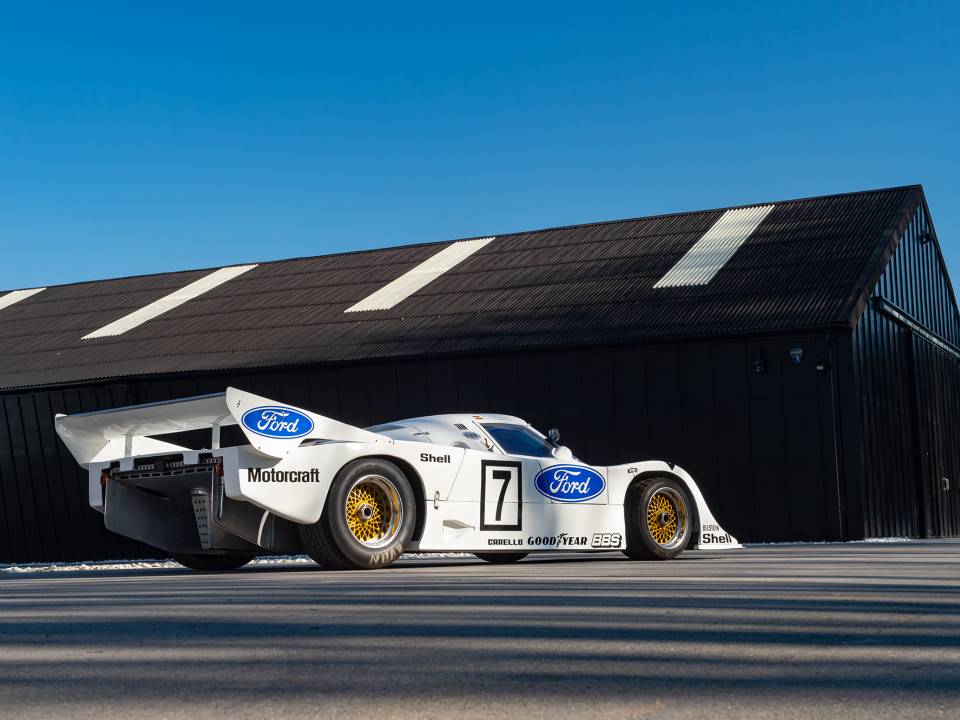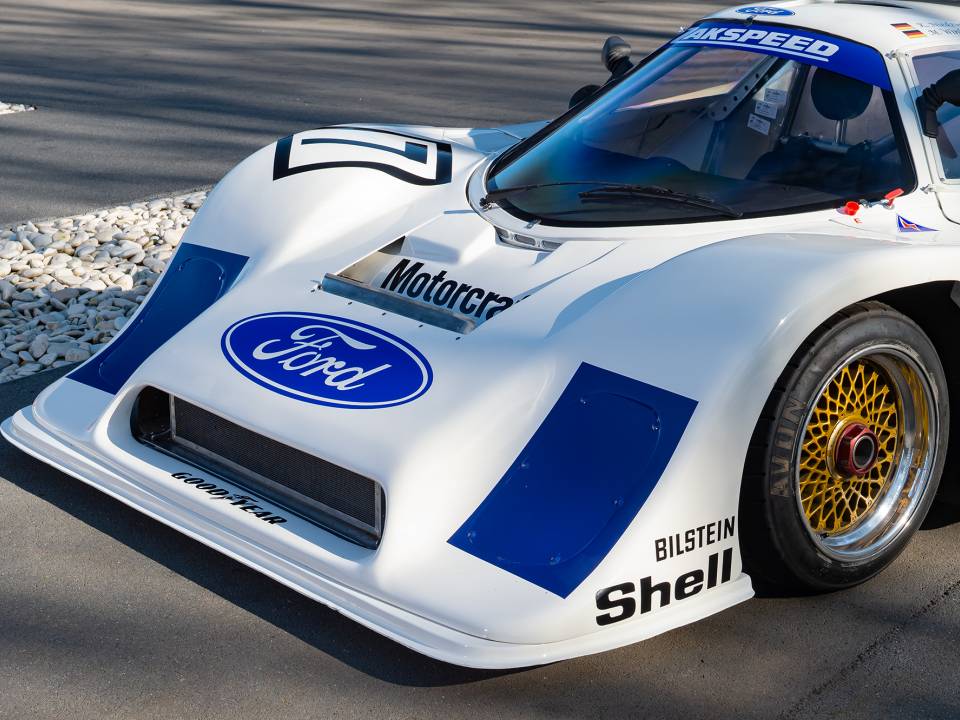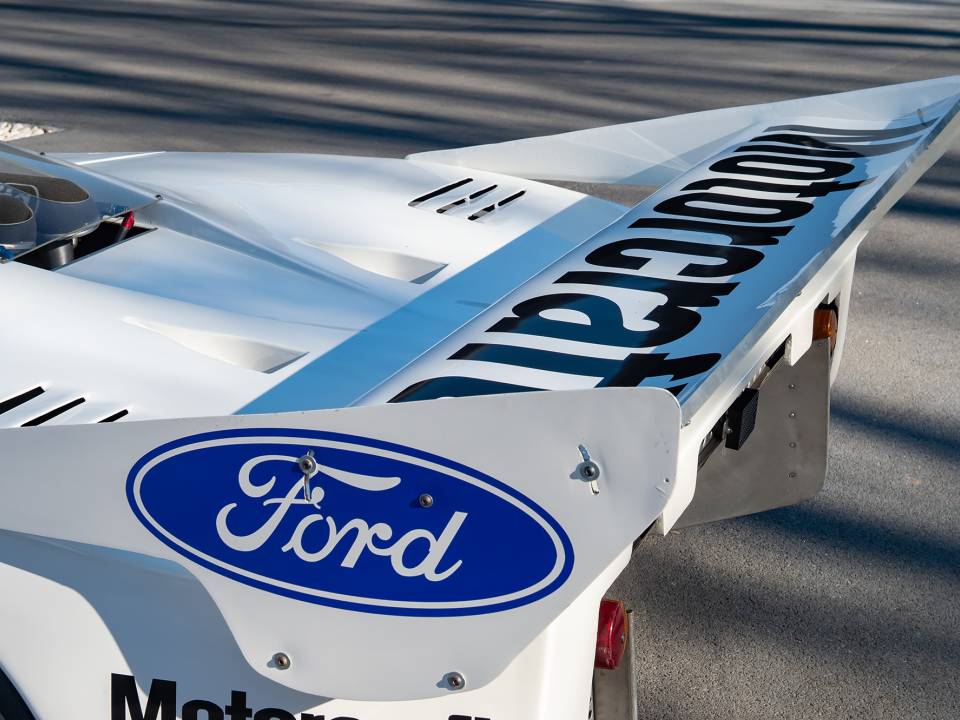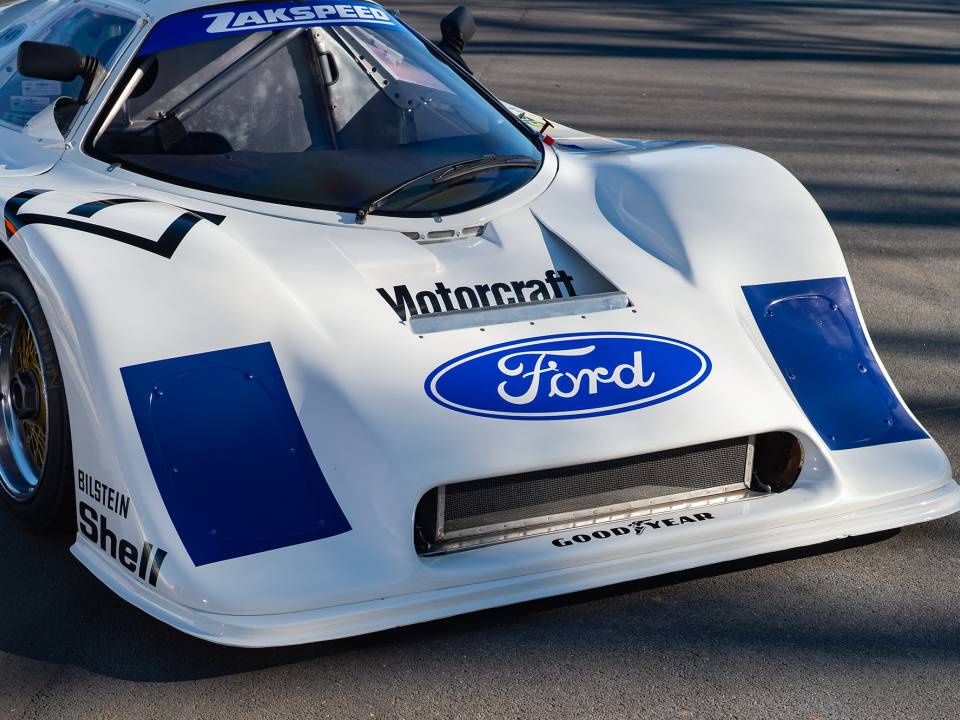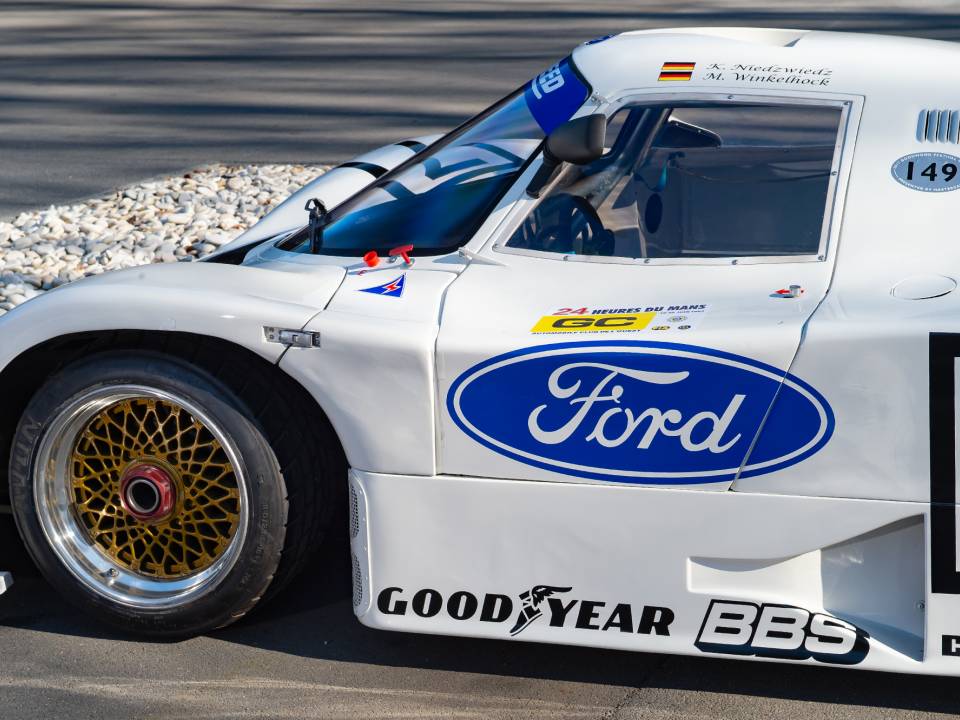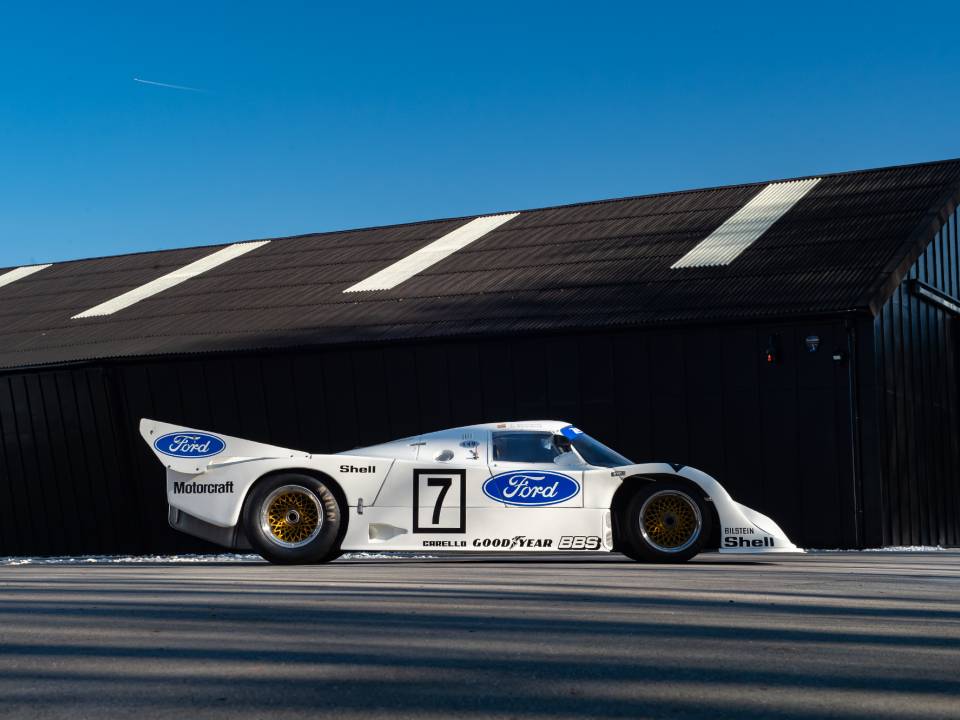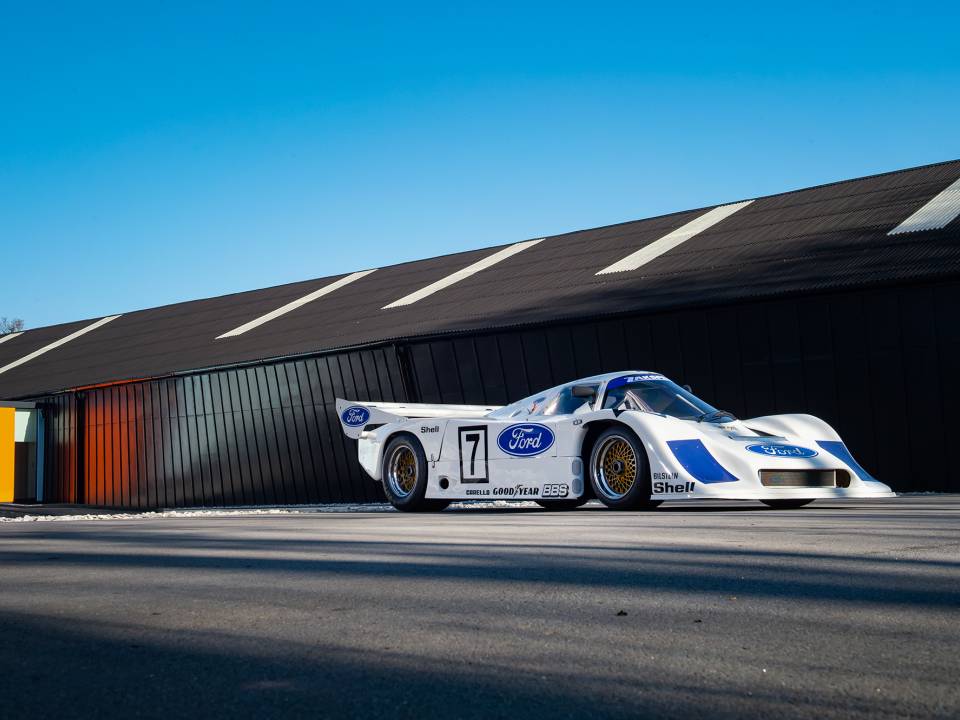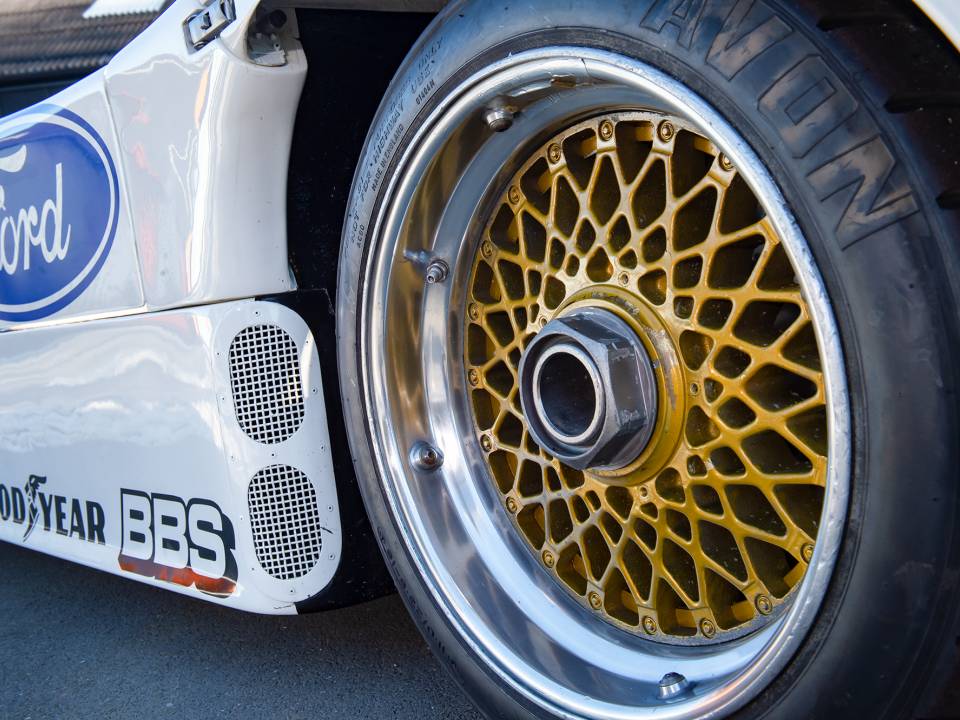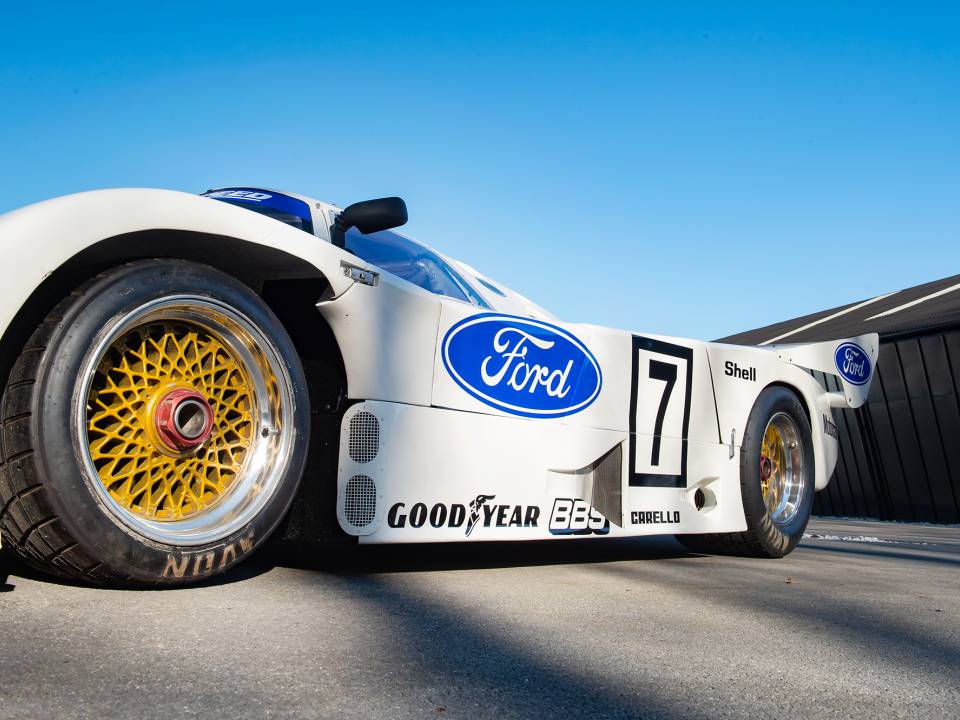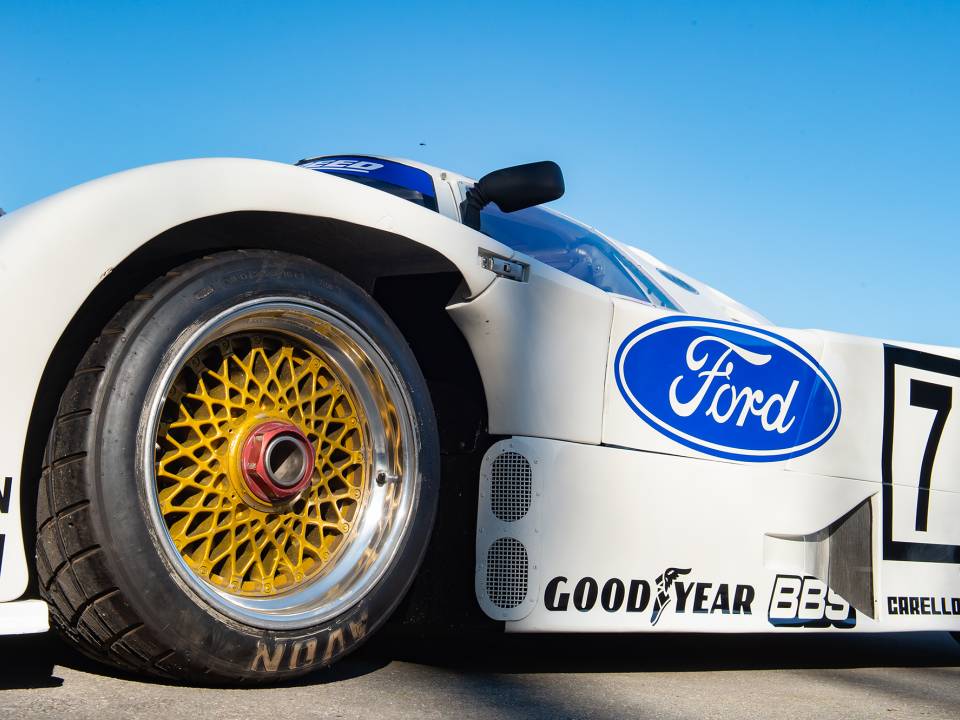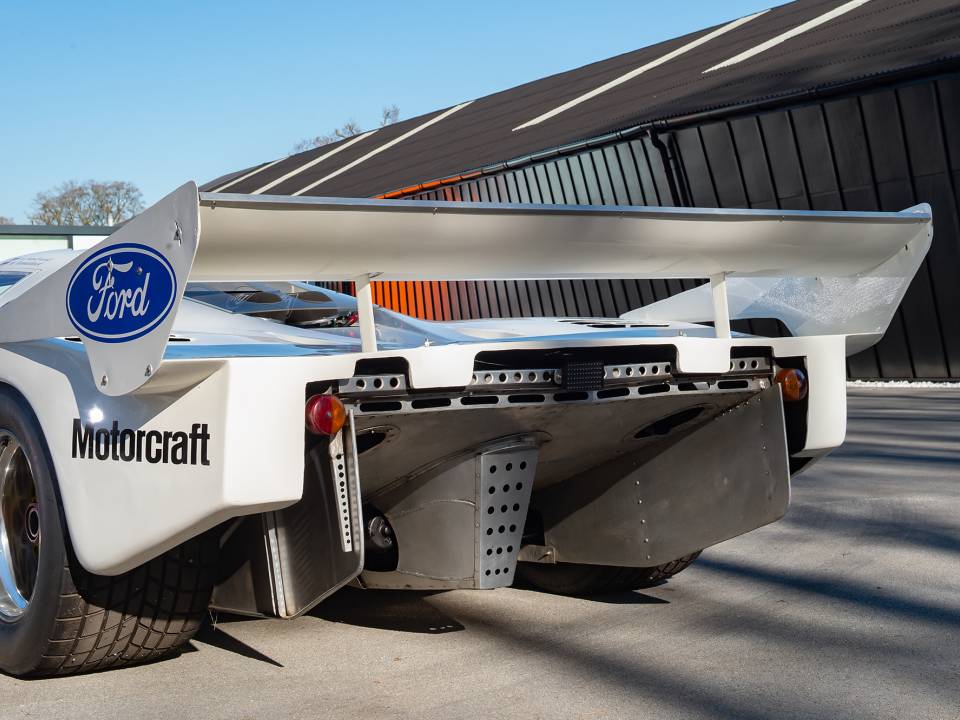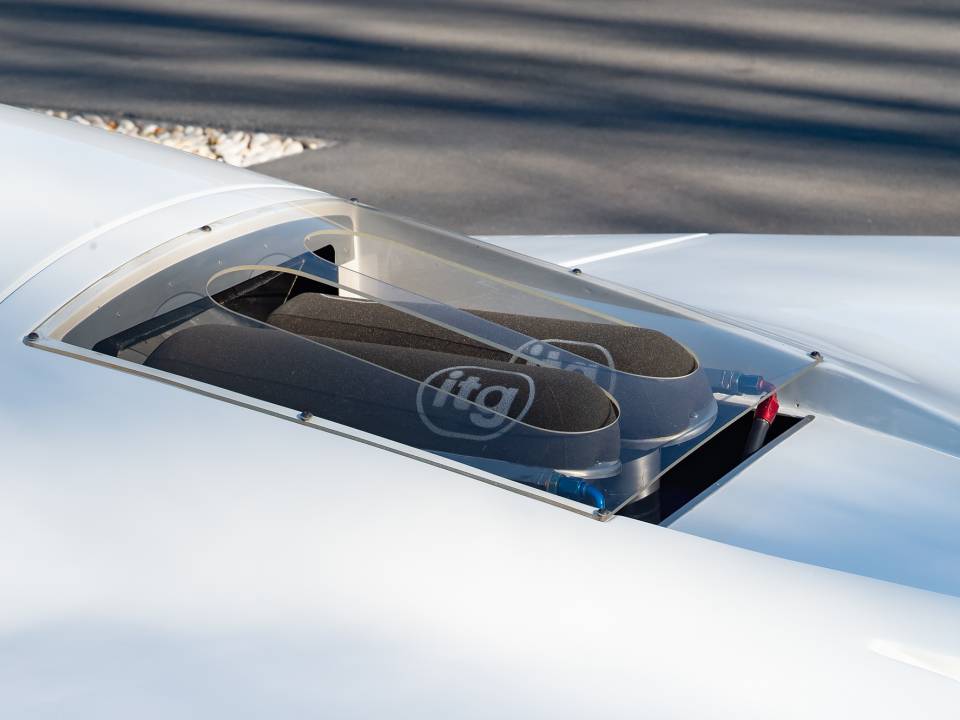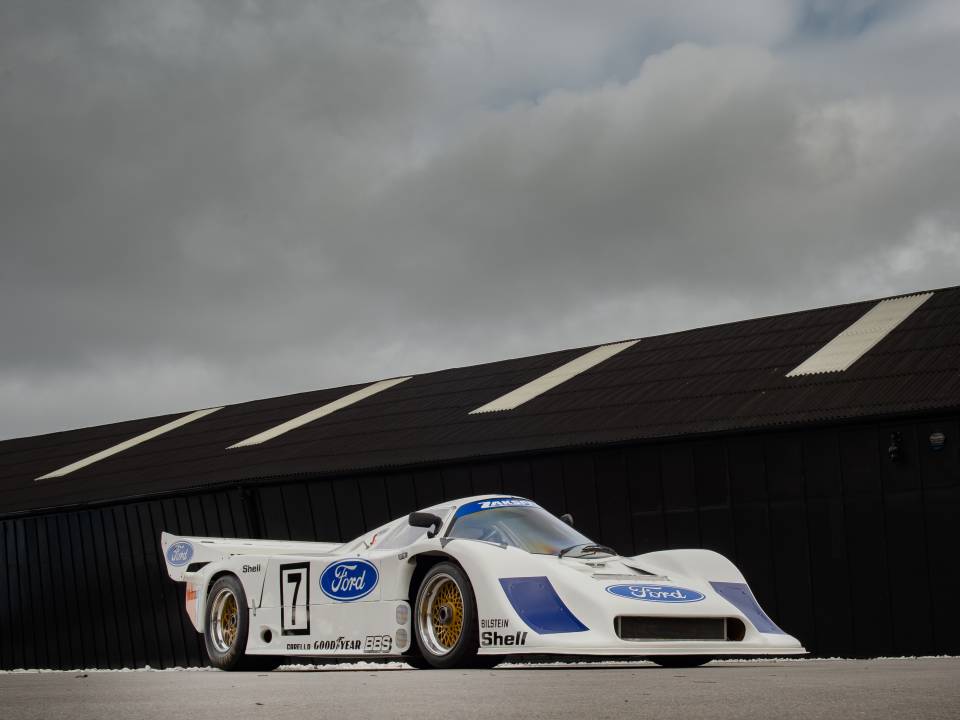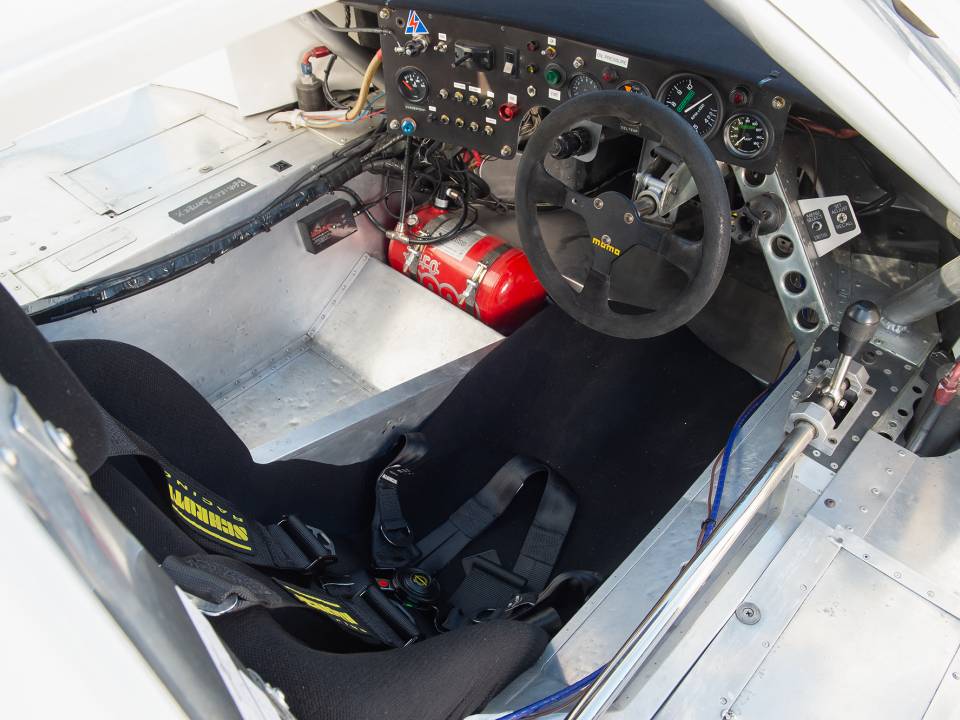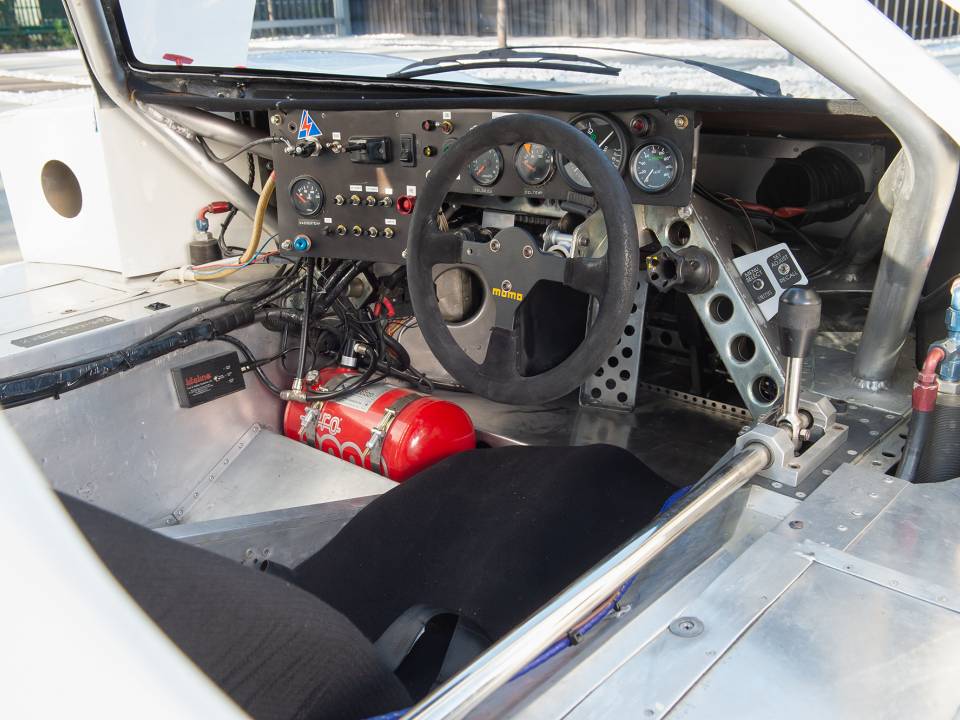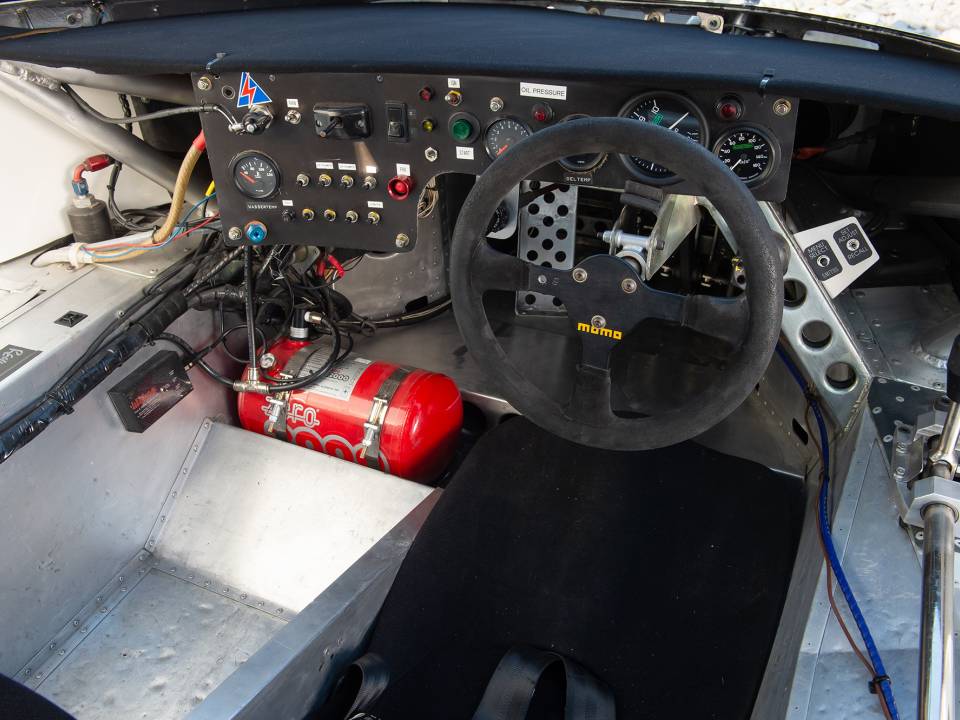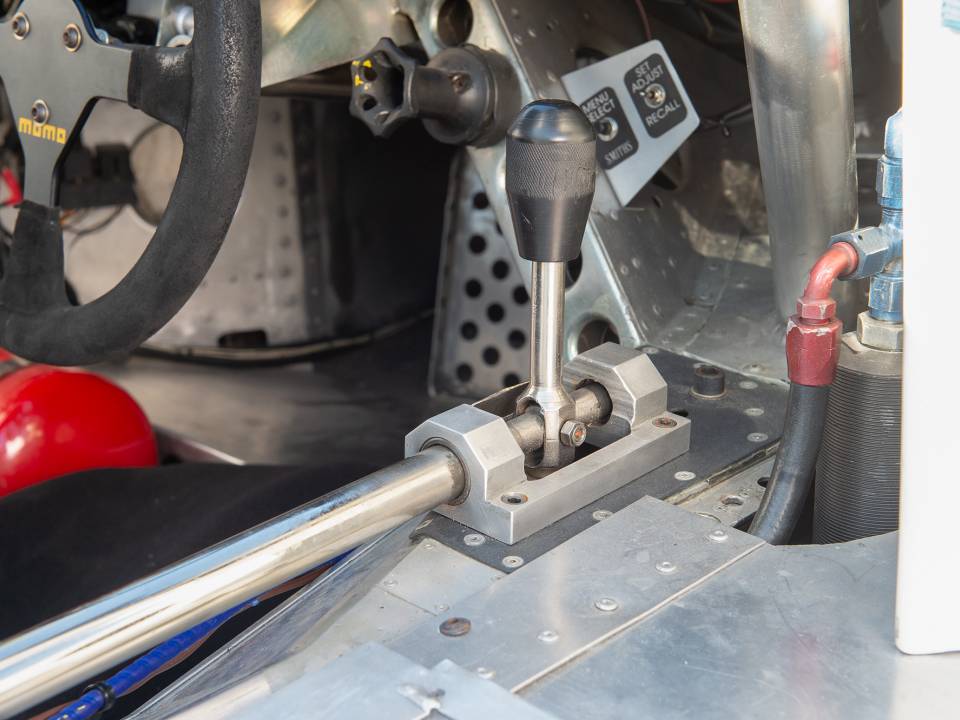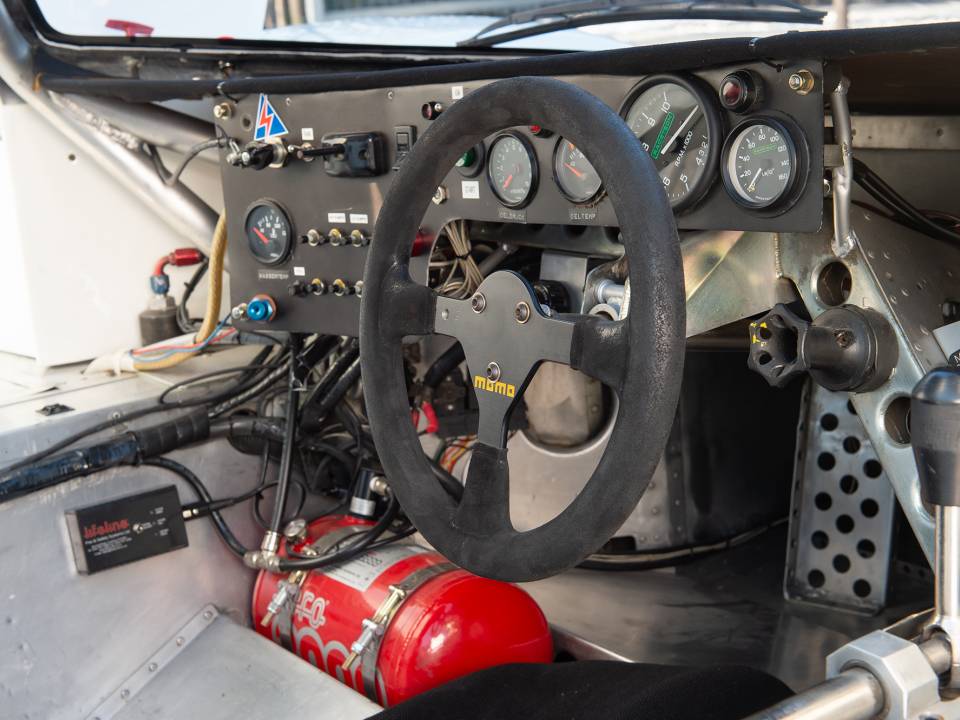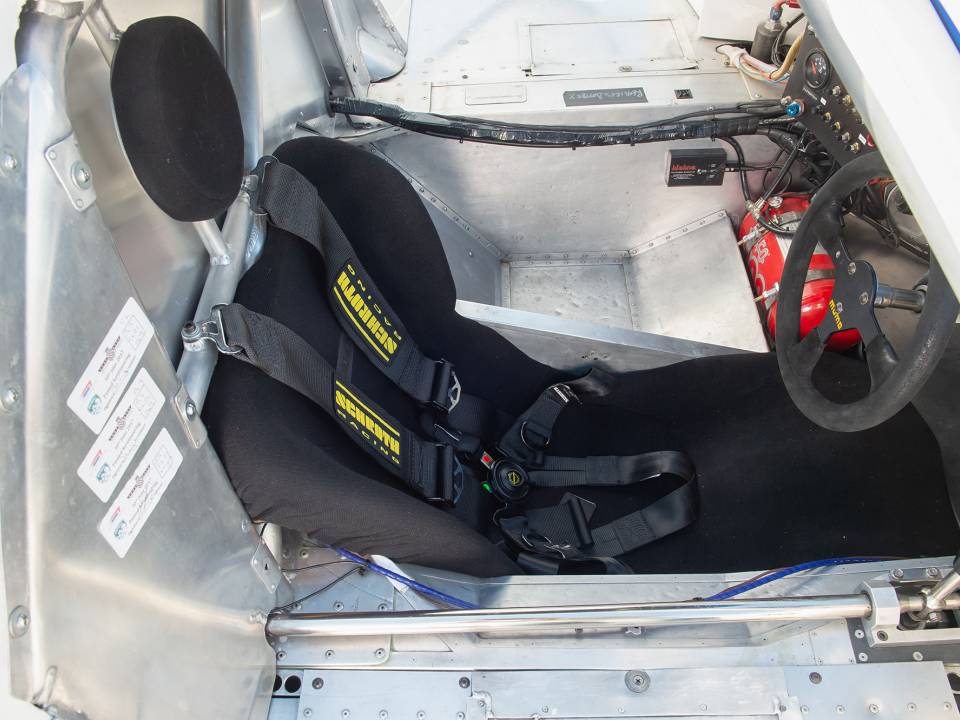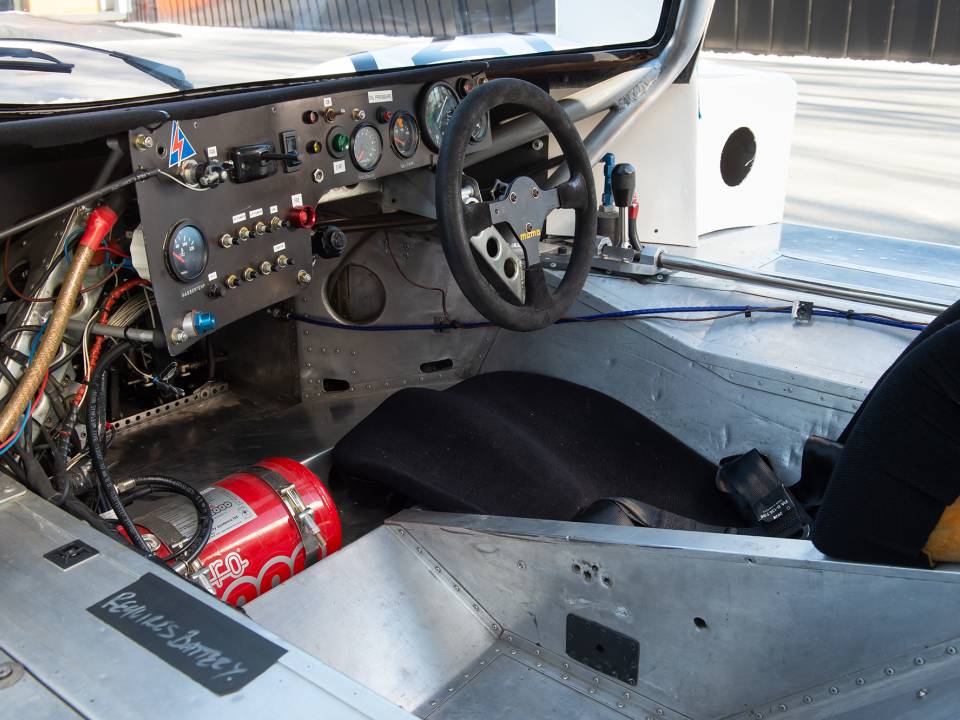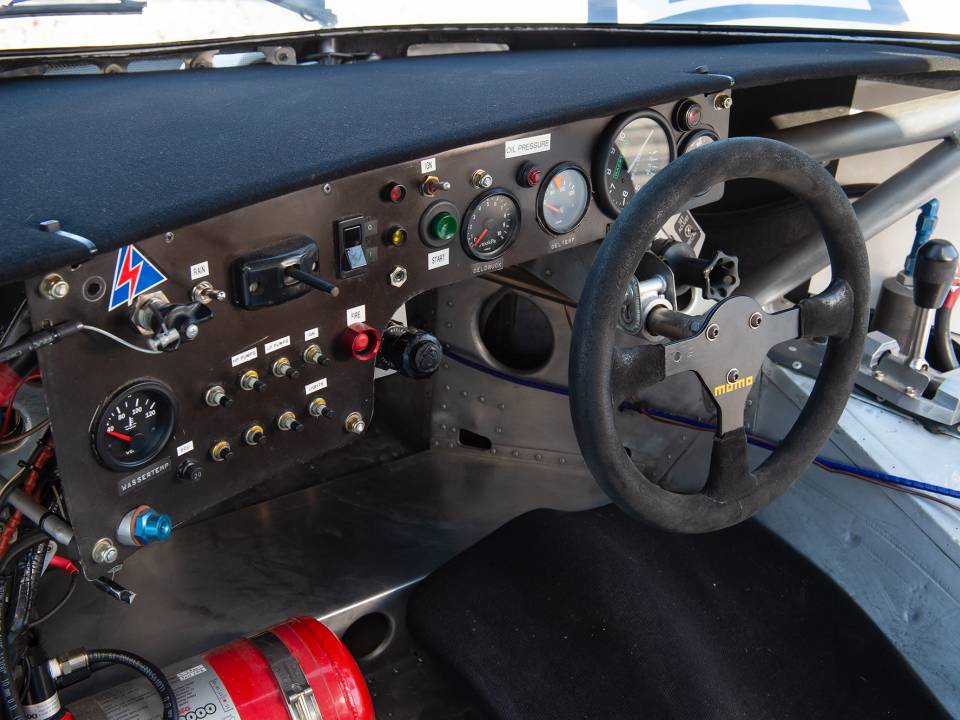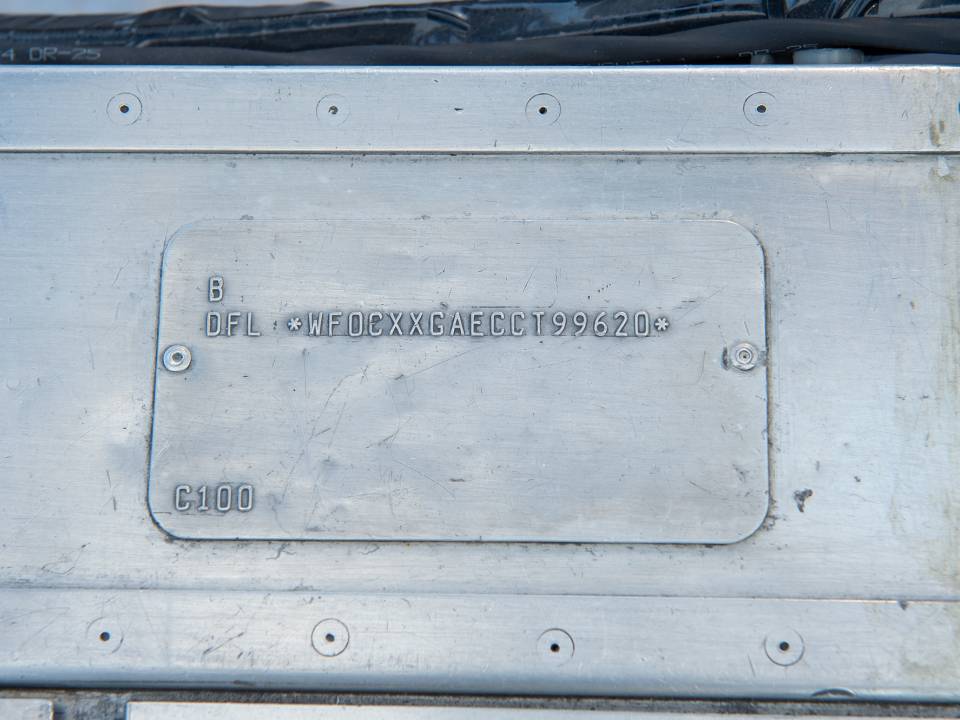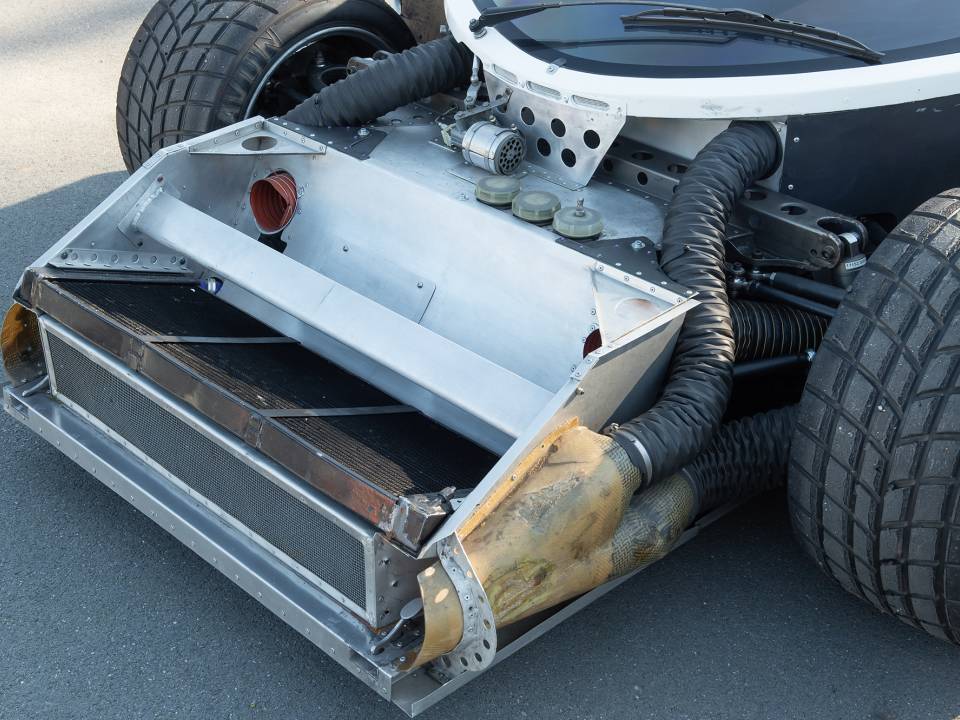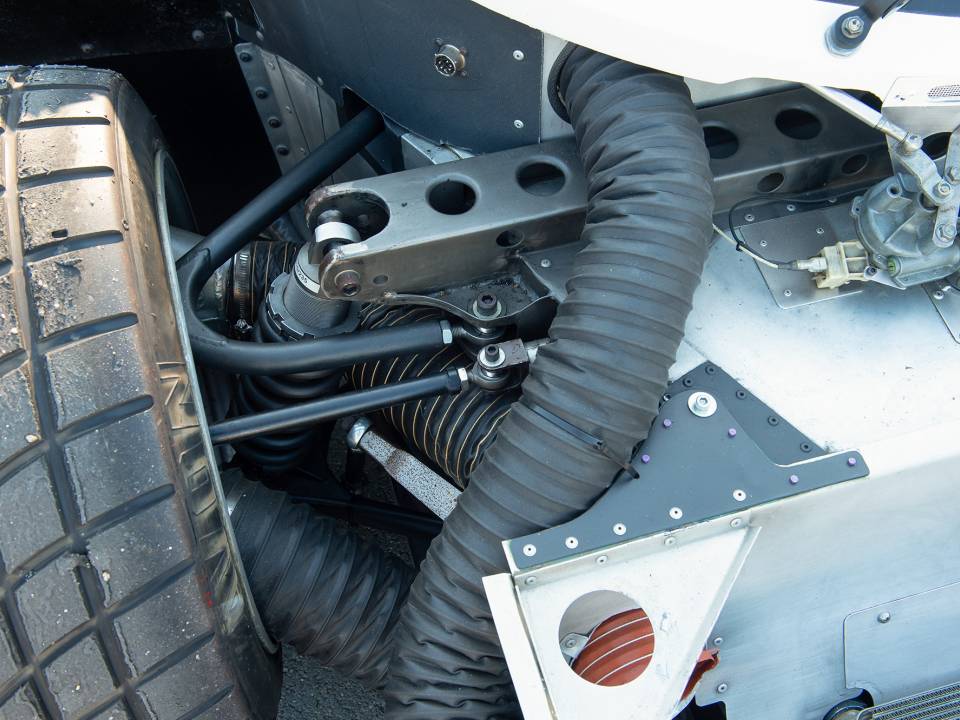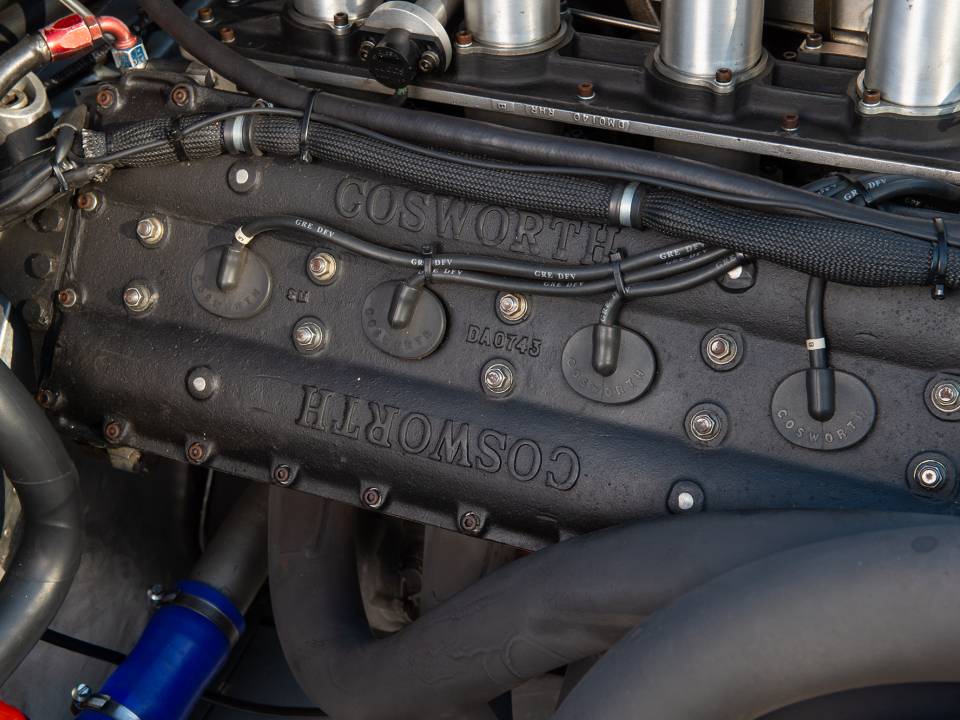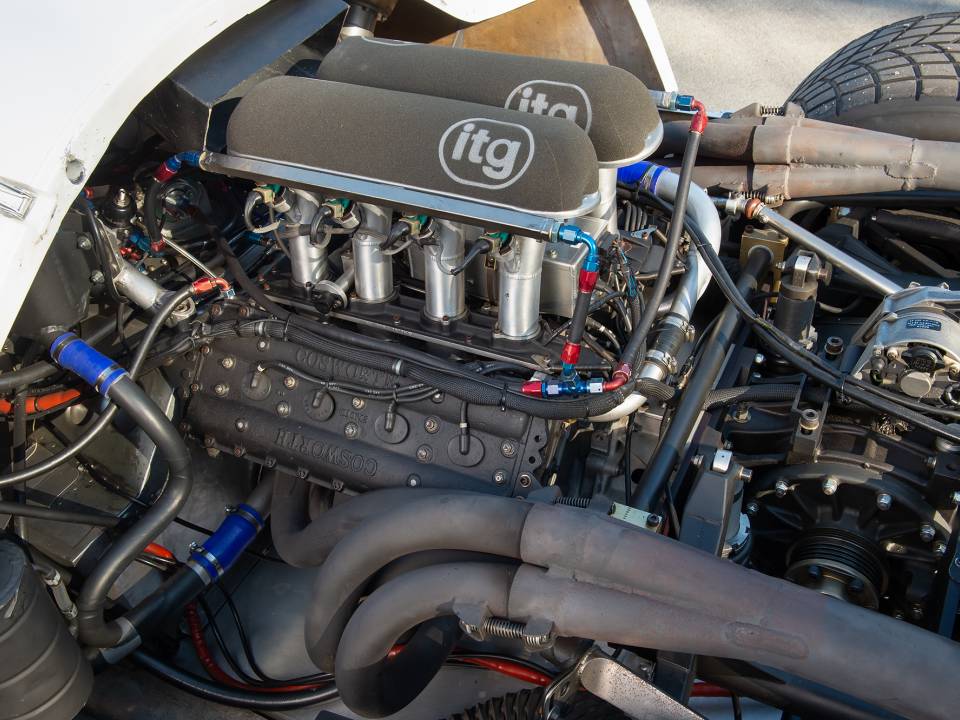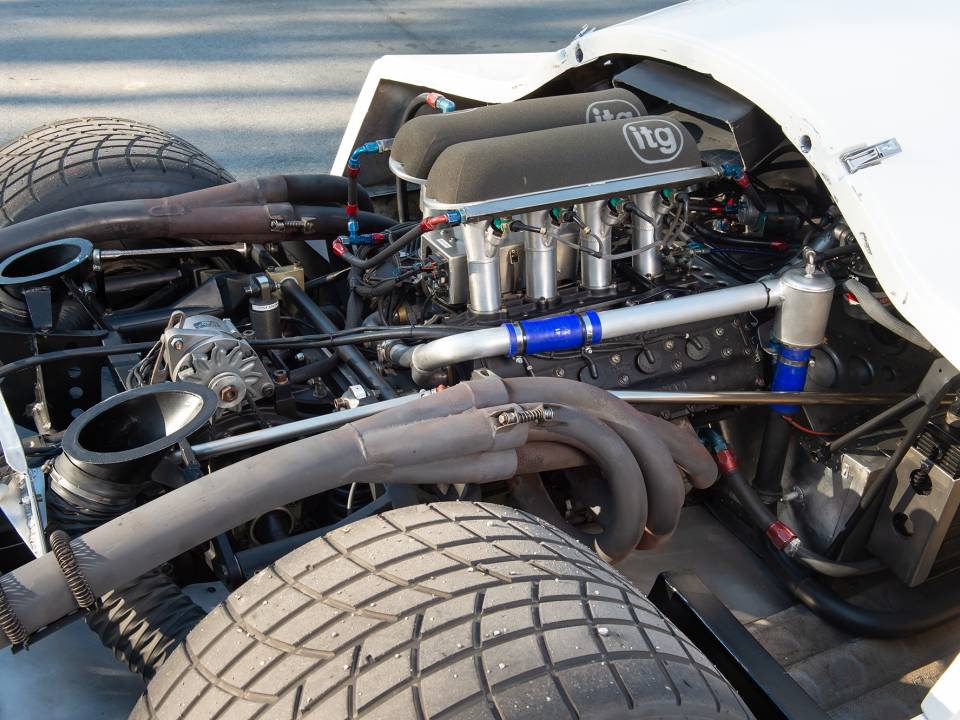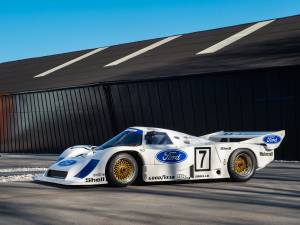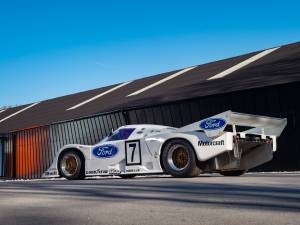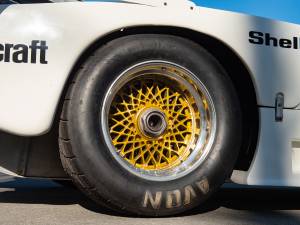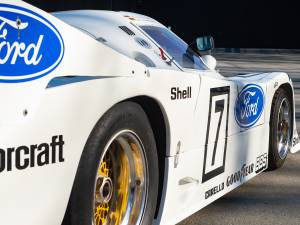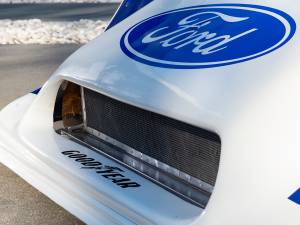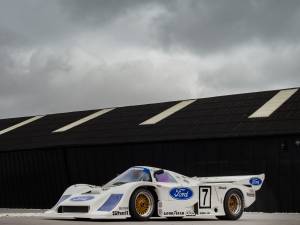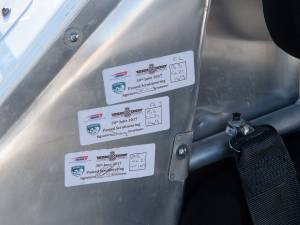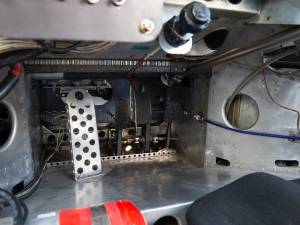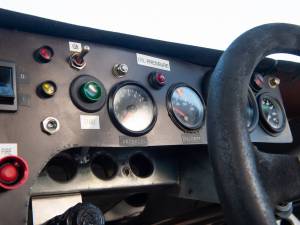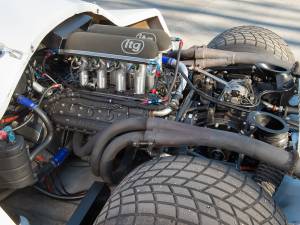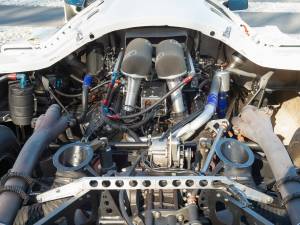1981 | Ford C100
Beschrijving
The factory Ford Team has only ever entered Le Mans with four models, the Ford GT40, the Capri, the current GT and the C100. Ford have only fought for overall victory with two cars – the GT40 and the C100.
Twelve years after the GT40’s final Le Mans win in 1969, the factory Ford team decided it was time to take on the great race again, this time building a prototype to the Group 6, and subsequent Group C regulations. Ford would again use the design genius of Len Bailey, who had seen such success with the GT40 program. The well-proven Ford Cosworth DFL (4 litres for the C100) would be mated to a chassis that was focussed on the heavy use of ground-effect. The resultant package was immediately fast, very fast. On its debut at the Brands Hatch 1000km in 1981, piloted by Manfred Winkelhock and Klaus Ludwig, C100/01 qualified on pole by over a second from the Lola and Kremer Porsche opposition. Only a gearbox problem prevented victory on maiden outing. Ford ended the 1981 season as the fastest prototype in the world, and there were high hopes for the future.
For 1982, the big opposition would come in the form of the new factory Rothmans Porsche 956’s, Martini Lancia LC1’s and the veteran French Rondeau Team. Over the winter of 1981, the Ford works Team would develop new higher downforce bodywork and and would start to extract some incredible pace from the car. Len Bailey would be replaced by Tony Southgate, and the famous Zakspeed team would be drafted into to aid with development.
Chassis 03 would make its debut in the hotly contested Deutsche Rennsport Meisterschaft (DRM) championship, where Ford could disguise the car in Jägermeister livery and run a little more under the radar with its new-spec car. At Zolder, Klaus Ludwig would put the car fourth on the grid, but DNF. Next up was DRM Hockenheim, again fourth on the grid for Ludwig, but again technical gremlins leaving the car tenth in the race.
Ford, however, felt that the C100 was ready for the world stage, and entered chassis 03 into the Silverstone 6hr, the UK round of the FIA World Endurance Championship. Now Ford white and blue, and emblazoned with huge ‘blue-oval’ logos, Winkelhock and Ludwig would put chassis 03 fourth on the grid, just behind the Rothmans Porsche and Martini Lancias. In the race, it would come home eighth, another result that didn’t do justice to the pace of the factory effort.
The next round of the FIA World Endurance Championship was on the fearsome Nürburgring Nordschleife ‘Green Hell’. Chassis 03, again with Winkelhock and Ludwig, would take pole position in qualifying. Despite its searing pace, differential issues hamstrung the car in the race.
June 1982 would bring the 50th running of the greatest race on earth, the Le Mans 24 Hour – a race that Ford hadn’t won since 1969 with the GT40. 1982 would be the first time since then that Ford would enter a car to fight for overall victory. Qualifying well, the two C100’s (running numbers 6 and 7) would start the 24hr strongly. So strongly in fact that chassis 03 (running number 7) would battle its way to the front, ahead of the works Porsches, Lancias, Rondeau and WM Peugeots. At hour 4, the car was in control of the race with Winkelhock at the wheel, when clutch issues hit. Before long, the race was lost, and despite leading Le Mans on its debut, C100/03 would not show in the results.
To help with development, Ford would enter another round of DRM with 03, resulting in a second place for Winkelhock at Norisring.
Back to the World Championship, and the Spa 1000km was next up. Once again competitive times would not lead to a finish of note.
For the final round of 1982 at the Brands Hatch 1000km, the C100 would lock out the front row in qualifying, 03 on pole, a full second clear of the Lancias and 3.5 seconds clear of the Rothmans Porsches! The early stages of the race saw an epic wet-weather battle between chassis 03 (Surer, Ludwig, Winkelhock) and chassis 05 (Winkelhock, Niedzwiedz), which only ended when the two cars made contact, sending 05 hard into the barriers – destroying the car. 03, would lose the lead through damage and would slip back to 5th, where it would stay until the flag – a race made so famous by Jacky Ickx incredible drive to the world championship title.
Despite all of the promise, the pole positions, and the leading of Le Mans, Ford pulled the plug on the C100 program at the end of 1982.
Chassis 03 would continue to race in DRM and Interserie with Zakspeed, but always retained its DFL engine. Many wins would come its way from 1983 and 1984, culminating in 3rd overall in the 1983 DRM Championship and the 1984 Interserie Championship crown for Klaus Niedzwiedz. Subsequently the car passed to Mike Baretta running with the Victor Dauer Racing Team for 1986. The car would remain with Baretta, totally original, until purchased by the current owner in 1997.
Ford C100 chassis 03 comes with two original ONS Wagenpasse (Ford Works and Baretta) and other associated period documentation. The car has recently been sympathetically restored, but remains hugely original. The C100 is the rarest works sports prototype that Ford have ever produced, and C100/03 represents a unique opportunity to acquire one of only three C100s known to exist, and one of only two with their original DFL engines. For any great Ford or racing collection, the last Ford to lead Le Mans overall is a very special addition.
Voertuigdetails
Kenmerken
- Merk
- Ford
- Model
- C100
- Eerste registratie
- Niet voorzien
- Bouwjaar
- 1981
- Kilometerstand
- 1 mls
- Carrosserienummer
- Niet voorzien
- Motornummer
- Niet voorzien
- Transmissienummer
- Niet voorzien
- Gelijke nummers
- Nee
- Vorige eigenaren
- Niet voorzien
Technische details
- Carrosserie detail
- Raceauto
- Vermogen (kW/pk)
- 397/540
- Cilinderinhoud (ccm)
- 3955
- Cilinders
- 8
- Deuren
- Niet voorzien
- Stuur
- Rechts
- Versnellingsbak
- Manueel
- Versnellingen
- 5
- Transmissie
- Achterkant
- Remmen voor
- Schijf
- Remmen achter
- Schijf
- Brandstof
- Benzine
Individuele configuratie
- Kleur
- Wit
- Interieurkleur
- Anders
- Interieur materiaal
- Anders
Conditie en registratie
- Heeft inspectierapport
- Niet voorzien
- Conditie
- Inspectierapport bestellen
- Toegelaten
- Rijklaar
